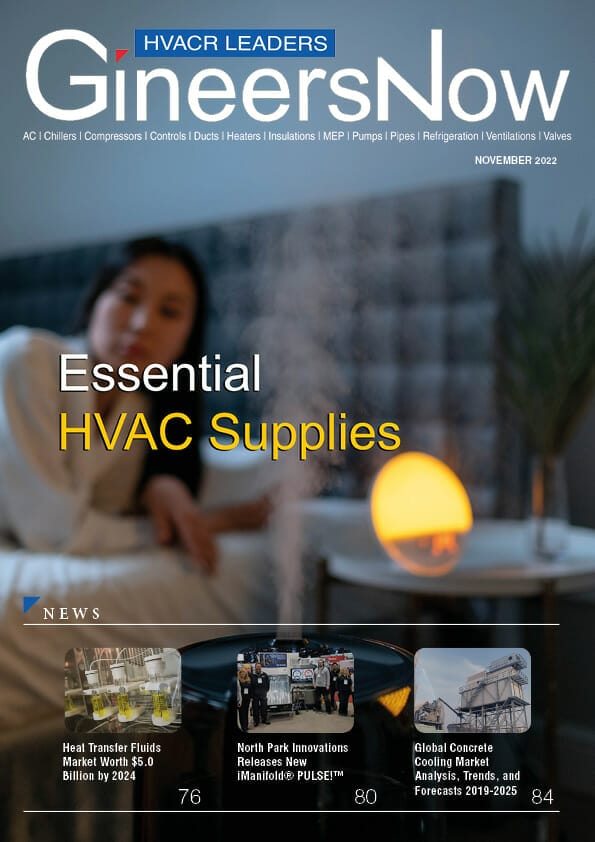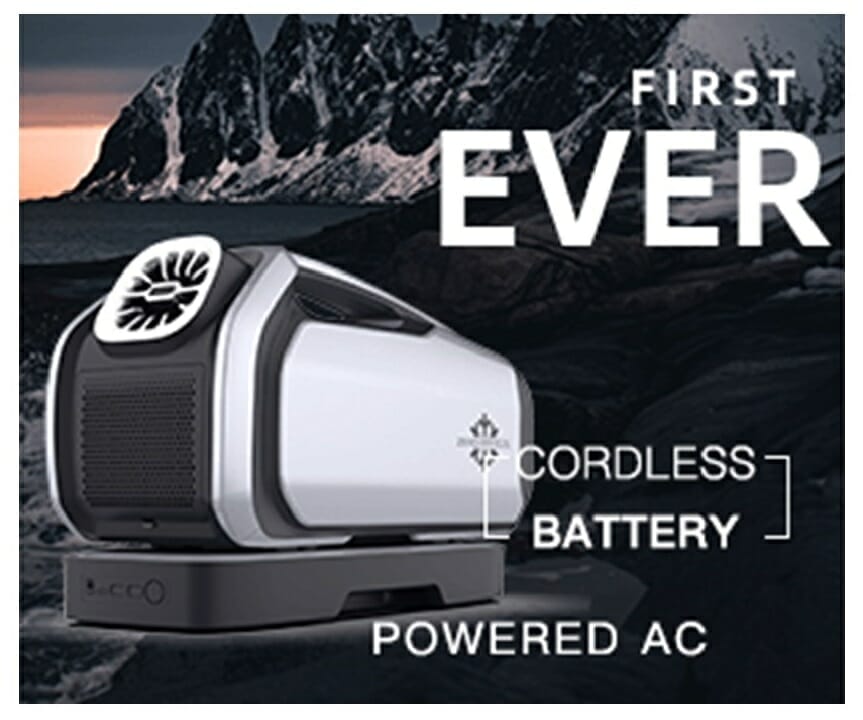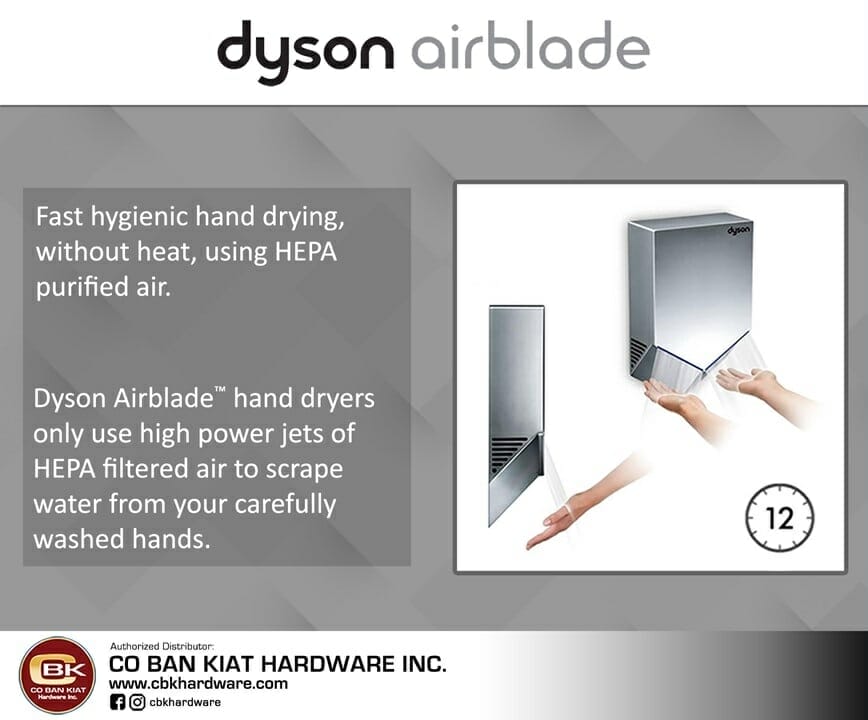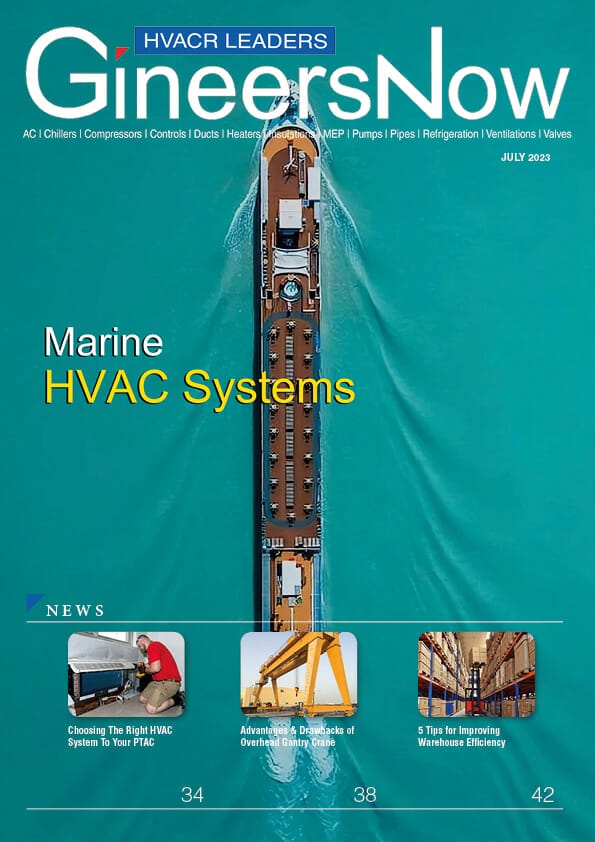If you want to keep your home comfortable year-round, there are some essential HVAC supplies you need. HVAC systems are a crucial part of keeping your home comfortable year-round. There are a few essential supplies you need to keep your system running smoothly. These include a programmable thermostat, a furnace filter, and weatherstripping. With these supplies, you can keep your home at the perfect temperature no matter what the weather is like outside.
A comfortable home is a happy home. And in order to maintain that comfort level, you need to have the proper HVAC supplies on hand.
What is HVAC
In any home or office, the heating, ventilation, and air conditioning system (HVAC) is an essential part of the building. The HVAC system is responsible for providing comfortable indoor temperatures year-round.
There are three main components to an HVAC system: a furnace, an air conditioner, and a ductwork system. The furnace provides heat in the winter by burning natural gas, propane, or oil. The air conditioner cools the air in the summer by circulating Freon.
The ductwork system distributes the heated or cooled air throughout the building. It is important to have regular maintenance done on your HVAC system to ensure it is working properly and efficiently.
Why HVAC supplies are important
HVAC supplies are important to have in any home or office. They help to regulate the temperature and can also improve air quality. Having the proper HVAC supplies can make a big difference in comfort and energy bills.
HVAC supplies are important components of any HVAC system. Without them, the system would not be able to function properly and could lead to a number of problems.
There are a few reasons why HVAC supplies are so important. First, they help to ensure that the air in your home or office is of the proper temperature. This is important for both comfort and safety reasons. If the air is too cold, it can lead to discomfort and even health problems. On the other hand, if the air is too hot, it can be unbearable and can also pose a fire hazard.
Another reason why HVAC supplies are important is that they help to circulate the air in your home or office. This is necessary in order to remove any stale or polluted air and to ensure that fresh air is constantly flowing through the space.
A list of essential HVAC supplies
Whether you’re a first-time homeowner or a seasoned pro, keeping your home comfortable year-round is a top priority. And while there are many factors that go into maintaining a comfortable home, having the right HVAC supplies is key.
From air filters to thermostats, here are the essential HVAC supplies you need to keep your home comfortable year-round:
Air Filters
Air filters are an essential part of any HVAC system. They work to remove dust, pollen, and other airborne particles from the air, keeping the air in your home or office clean and fresh. There are a variety of air filters available on the market, so it’s important to choose one that will work best for your needs.
How often do you need to replace your air filters?
One of the most important things you can do for your HVAC system is to regularly change your air filters. depending on the type of filter you have, they should be changed every 1-3 months. Not only will this help your system run more efficiently, it will also improve the quality of air in your home.
Why do you need to replace your air filters?
As the weather starts to cool down, you may be thinking about turning on your furnace for the first time in months. But before you do, there’s one important maintenance task you need to take care of first: replacing your air filters. Here’s why it’s so important to change your air filters regularly:
1. Extended use can damage your furnace
2. It can decrease the efficiency of your HVAC system
3. It can cause indoor air quality problems
4. It can lead to higher energy bills
What happens if you do not replace your air filters?
If you don’t replace your air filters on a regular basis, it can cause a number of problems for your furnace and your home as a whole.
This means that your HVAC system will have to work harder to circulate air throughout your home. This will cause your energy bills to increase and can shorten the lifespan of your HVAC system. Additionally, dirty air filters can lead to indoor air pollution and can cause respiratory problems for people with allergies or asthma.
Thermostat (Temperature Control)
A thermostat or temperature control is a device that regulates the temperature of a space. The most common type of thermostat is used to control the temperature of a home or office, but there are also industrial and commercial thermostats that can be used to regulate the temperature of larger spaces. Thermostats work by sensing the temperature of the space they are controlling and then turning on or off the heating or cooling system to maintain the desired temperature.
Thermostats are an important part of any HVAC system, as they allow you to control the temperature of your home or office and keep it at a comfortable level. There are a variety of different types of thermostats available on the market, so it is important to choose one that best fits your needs. If you have an HVAC system in your home, chances are you already have a thermostat installed.
How often do you need to replace your temperature control?
The answer to this question depends on a few factors, such as the type of thermostat you have and the age of your HVAC system. If you have an older model thermostat, it may need to be replaced more often than a newer model. And if your HVAC system is getting up there in age, it may also need to be replaced more often.
In general, though, most experts recommend replacing your thermostat every 3-5 years. This will help ensure that your HVAC system is running efficiently and that your home stays comfortable no matter what the weather outside is like.
How do you maintain your home thermostat?
Maintaining your home thermostat is important for a number of reasons. First, it helps to keep your energy bills down. Second, it prevents your HVAC system from working too hard and wearing out prematurely. Third, it keeps your home comfortable all year round.
There are a few things you can do to make sure your home thermostat is always in good working order. First, check the batteries every month or so and replace them as needed. Second, wipe down the unit with a damp cloth every few months to remove any dust or dirt buildup. Third, have a professional HVAC technician come out and inspect your unit every year to make sure everything is in good working order.
What happens if you do not maintain your home thermostat?
If you do not maintain your home temperature controls, your HVAC system will have to work harder to heat or cool your home, which can lead to higher energy bills. Additionally, your HVAC system may break down more often if it is not properly maintained, which can be expensive to repair. Therefore, it is important to maintain your home thermostat in order to keep your energy bills low and your HVAC system running smoothly.
How to choose the best thermostats?
There are many brands of thermostats on the market, and it can be difficult to know which one to choose. However, there are a few things to look for when choosing a thermostat that will help you make the best decision.
First, consider the features that you need in temperature controls. For example, some thermostats come with Wi-Fi capabilities, so you can control them from your smartphone or tablet. Other features to look for include programmable schedules, vacation settings, and energy usage monitoring.
Once you’ve narrowed down your choices based on features, it’s time to compare prices. Thermostats can range in price from around $30 to $300, so be sure to set a budget before you start shopping.
Finally, read online reviews of the thermostats you’re considering.
What are the best brands of thermostats (temperature controls)?
One of the most important things to consider is what brand of the thermostat to buy. Here are some of the best brands on the market:
1. Google Nest Learning Thermostat:
This brand is one of the most popular on the market, and for a good reason. Their thermostats are easy to use and can be controlled from your smartphone.
2. Honeywell:
Another well-known brand, Honeywell, makes high-quality thermostats that are sure to keep your home comfortable all winter long.
3. Ecobee:
This company specializes in smart thermostats that can be controlled via voice commands. If you’re looking for a cutting-edge option, Ecobee is the way to go.
Insulation
Insulation is one of the most important components of HVAC supplies, and it is essential for keeping your home comfortable year-round. There are many different types of insulation available, and each has its own advantages and disadvantages. Choosing the right type of insulation HVAC supplies for your home can be a challenge, but it is important to consider both cost and performance when making your decision.
What are the levels of insulation?
There are three levels of insulation: R-13, R-19, and R-38. The higher the R-value, the more insulation the product has.
R-13 is the lowest level of insulation and is typically used in walls that separate living spaces from each other, such as interior partitions. It has an R-value of 13, meaning it can resist heat flow 13 times better than an uninsulated wall.
R-19 is a higher level of insulation and is typically used in walls that enclose living spaces, such as exterior walls. It has an R-value of 19, meaning it can resist heat flow 19 times better than an uninsulated wall.
R-38 is the highest level of insulation and is typically used in ceilings.
Where to insulate?
There are many places in your home where insulation is important. Some of the most important places to insulate are:
Around your HVAC unit: Insulation around your HVAC unit will help keep the cool air in during the summer and the warm air in during the winter. This will help keep your energy bills down and make your HVAC unit work more efficiently.
In your attic: A well-insulated attic will help keep your home comfortable all year long. Be sure to check for any gaps or holes in your attic insulation and seal them up.
In your walls: Properly insulated walls will also help keep your energy bills down and make your home more comfortable. Check for any cracks or gaps in your wall insulation and seal them up.
How often do you need to replace your home’s insulation HVAC supplies?
If your home is more than a few decades old, chances are its insulation is no longer doing its job. In fact, homes lose up to 30 percent of their heat through gaps and cracks in the walls, ceilings, and floors. That’s why it’s important to check your insulation regularly and replace it when necessary.
Most experts recommend replacing your insulation every 10 to 15 years. But if you live in an older home or live in an area with extreme weather conditions, you may need to replace it more often.
There are a few telltale signs that it’s time to replace your insulation:
- Your energy bills are rising even though you’re not using more energy
- Your home is drafty
- You can see or feel the insulation through gaps in the walls or floors
How do you maintain your home’s insulation HVAC supplies?
When it comes to home insulation and HVAC supplies, there are a few things you can do to ensure longevity and efficiency. First, check for air leaks around doors and windows and seal them with weatherstripping or caulk. Second, invest in quality HVAC products – this will save you money in the long run. Third, have your HVAC system serviced regularly to ensure it is running correctly and efficiently. By following these simple tips, you can maintain your home’s insulation and HVAC supplies easily!
Why do you need to replace your home’s insulation HVAC supplies?
As the weather starts to cool down, you may be thinking about turning on your home’s heating system. But before you do, you may want to consider replacing your home’s insulation and HVAC supplies. Here’s why:
1. Insulation and HVAC supplies can wear out over time. Just like any other type of material in your home, insulation and HVAC supplies can degrade due to age and exposure to the elements. This can lead to drafts, air leaks, and uncomfortable indoor temperatures.
2. Replacing your insulation and HVAC supplies can save you money on energy bills. If your home is poorly insulated, it will take more energy to heat or cool it. This means higher energy bills for you. By replacing old insulation and HVAC supplies, you can improve your home’s energy efficiency and lower your monthly expenses.
3. You can increase the value of your home. If you’re thinking about selling your house, you’ll probably want to make some upgrades before putting it on the market.
What happens if you do not replace your home’s insulation HVAC supplies?
If you do not replace your home’s HVAC supplies, a number of things can happen.
First, your energy bills will likely increase, as older insulation does not provide the same level of energy efficiency as newer supplies.
Additionally, your home may become more uncomfortable as drafts and temperature fluctuations become more common.
In extreme cases, failure to replace HVAC supplies can lead to structural damage to your home.
Vents and ducts (ventilation and ductwork)
Vents and ducts (ventilation and ductwork) are an important part of your home’s heating, ventilation, and air conditioning (HVAC) system. They help to move air throughout your home and can be used to regulate the temperature in each room. Vents and ducts are typically made from metal or plastic and are installed in your walls, ceilings, or floors.
There are a variety of different types of vents and ducts that can be used in your home, depending on your needs. The most common type of vent is the floor vent, which is used to circulate air from the furnace or air conditioner through the rooms of your house. Ceiling vents are also common and can be used to exhaust stale air from the room or to bring fresh air into the room. Wall vents can be used for both intake and exhaust and are typically located near windows or doors.
Why is the cleaning and sealing your vents and ducts important?
Maintaining a clean HVAC system, such as your ventilation and ducting system, is important for several reasons.
First, it ensures that the air in your home or office is free of dust, pollen, and other allergens.
Second, it prevents the build-up of mold and mildew, which can cause respiratory problems. Third, it keeps your HVAC system running efficiently, which saves you money on energy bills.
Cleaning and sealing your vents and ducts is the best way to keep your HVAC system clean. Sealing your ducts will also help to prevent leaks, which can lead to wasted energy and higher utility bills.
How to clean and seal your vents and ducts?
So how do you go about cleaning and sealing your vents and ducts? The first step is to identify any areas where there may be gaps or cracks. These can often be found around doors and windows, as well as in the attic or crawlspace. Once you’ve located them, seal them with caulk or weatherstripping.
Next, you’ll want to give your vents a good cleaning. Use a leaf blower to remove any leaves and debris that may have built up. Then, you’ll want to vacuum the vents thoroughly. If your vents are located in the attic, you’ll want to add a layer of protection by applying tar paper, or roofing felt over the shingles.
How often do you need to replace your vents and ducts?
Most homeowners don’t think about their HVAC vents and ducts until there’s a problem. But these essential parts of your home’s heating and cooling system need regular maintenance to function properly. So how often should you replace your vents and ducts?
HVAC engineers and experts recommend that you inspect your vents and ducts at least once a year. If you notice any cracks, holes, or other damage, it’s time to replace them. Additionally, if your vents and ducts are more than 10 years old, it’s probably time for an upgrade.
If you’re not sure whether it’s time to replace your vents and ducts, contact a professional HVAC contractor. They can help you determine if your vents and ducts need to be replaced or if they just need a repair.
Why do you need to replace your vents and ducts?
You may not think about your home’s vents and ducts very often, but they play a crucial role in your HVAC system. Over time, they can become clogged with dust and debris, which can reduce your system’s efficiency and cause problems with air quality.
It’s important to have your vents and ducts cleaned on a regular basis and to replace them when they start to show signs of wear and tear. By doing so, you’ll ensure that your HVAC system is able to operate at its best and provide you with the comfortable indoor environment you deserve.
What happens if you do not clean or replace your vents and ducts’ HVAC supplies?
If you do not clean or replace your HVAC vents and ducts, a number of things could happen.
For one, your energy bills could go up because your HVAC system will have to work harder to move air through dirty vents and ducts.
Additionally, your indoor air quality could suffer as dirt, dust, and other allergens get circulated throughout your home. In extreme cases, mold and mildew can grow in dirty vents and ducts, which can pose a serious health risk for you and your family. To avoid these problems, be sure to regularly clean and replace your HVAC supplies.
What is Furnace
A furnace is a device used for heating. The word furnace can refer to a device that burns fuel to create heat or to a device that uses electricity to create heat. Furnaces are used in homes and businesses to provide warmth during the coldest months of the year.
Furnaces work by circulating warm air through a system of ducts. The air is heated by either burning fuel, such as natural gas, propane, or oil, or by using electricity. Furnaces are typically located in a basement or garage and are connected to the ductwork of a home or building.
Furnaces need regular maintenance in order to function properly. For example, the HVAC supplies like air filters must be replaced regularly in order to prevent dust and dirt from clogging the system.
How often do you need to maintain your furnace?
It’s important to keep your furnace in good working order. How often you need to maintain it depends on the model and make of your furnace, as well as how often you use it.
As a rule of thumb, you should have your furnace serviced at least once a year. However, if you live in an area with extreme temperatures or use your furnace more frequently, you may need to service it more often.
If you’re not sure how often to maintain your furnace, consult your owner’s manual or ask a professional HVAC technician for advice.
How do you maintain your home furnace’s HVAC supplies?
If you own a home, it’s important to know how to maintain your furnace and HVAC supplies. By keeping these items in good working order, you’ll save money on your energy bills and avoid costly repairs.
To keep your furnace in good condition, be sure to change the filter regularly. A dirty filter can cause the furnace to overheat and break down. You should also have your furnace serviced by a professional every few years.
Your HVAC system is responsible for heating and cooling your home, so it’s important to keep it in good working order. Have the system serviced by a professional every few years and be sure to change the filters regularly. You can save money on your energy bills by doing these simple things.
Why do you need to clean and maintain your furnace’s HVAC supplies?
Your furnace’s HVAC supplies are essential to its proper function and efficiency. Without regular cleaning and maintenance, your furnace will have to work harder to heat your home, leading to higher energy bills and potential repair costs. A clean furnace also helps improve indoor air quality by preventing dust and other particles from circulating through your home.
What happens if you do not clean or maintain your furnace?
If you do not clean or maintain your furnace, a number of things can happen. Your furnace may become less efficient, meaning that it will have to work harder to heat your home and your energy bills will go up. You may also start to notice strange smells coming from your furnace or even see soot building up on surfaces near the furnace. In extreme cases, a dirty or unmaintained furnace can even cause a fire. To avoid these problems, it is important to regularly clean and maintains your furnace according to the manufacturer’s instructions.
Air conditioner
An air conditioner is a device that removes heat from the air in your home, office, or other building. It does this by circulating the air through a series of coils. The coils are filled with a refrigerant, which absorbs the heat from the air. The refrigerant then circulates back to the air conditioner, where it releases the heat and cools off. The cooled air is then circulated back into the room.
Air conditioners come in a variety of sizes and shapes, but they all work essentially the same way. The most common type of air conditioner is the window unit. These units fit into a window and have two main parts: an evaporator and a condenser. The evaporator contains the coils that circulate the refrigerant, while the condenser contains a fan that blows out hot air.
How often do you need to replace your air conditioner?
As the weather gets hotter, you may be wondering how often you need to replace your air conditioner. The answer depends on a few factors, including the type of air conditioner you have and how well you maintain it.
If you have a central air conditioner, it should last about 15 to 20 years. If you have a window unit, it will probably only last about 10 years. But these are just averages, some air conditioners may last much longer with proper care.
To extend the life of your air conditioner, be sure to keep the filters clean and clear. Clogged filters can cause the unit to work harder and use more energy. You should also have an HVAC professional service your unit at least once a year to keep it running smoothly.
How do you maintain your home air conditioner and HVAC supplies?
It’s important to maintain your home air conditioner and HVAC supplies to keep your system running smoothly. Regular maintenance will also help you avoid expensive repairs.
To clean your air conditioner, start by turning off the power. Then, remove the unit’s cover and use a brush or vacuum attachment to clean the coils. Next, clean the fan blades and surrounding area. Finally, replace the cover and turn on the power.
To clean your HVAC supply vents, start by removing the vent covers. Then, use a vacuum attachment to clean the vents and surrounding areas. Be sure to also clean the ductwork that leads to the vents.
Regular maintenance of your air conditioner and HVAC supplies will help extend their life and keep your system running efficiently.
How to determine if you need to replace your air conditioner?
When the weather outside is frightful, the last thing you want is for your air conditioner to go kaput. But when your AC unit starts acting up, how can you tell whether it needs a repair or replacement?
Here are a few key indicators that it might be time for a new air conditioner:
- Your energy bills have been slowly creeping up, even though you haven’t changed your usage habits.
- You hear strange noises coming from the unit, or it’s started blowing hot air.
- It’s more than 10 years old.
If you think your air conditioner might be on its last legs, the best course of action is to call in a professional. A qualified HVAC technician will be able to diagnose the problem and recommend the best course of action.
What happens if you do not clean or replace your air conditioner?
If you do not clean or replace your air conditioner, the air in your home will become increasingly dirty and polluted. The air conditioner filters dirt, dust, and other airborne particles from the air, but over time, these filters become clogged with debris. When this happens, the air conditioner cannot work properly and will eventually break down. Not only is this a costly repair, but it can also be a health hazard, as dirty air can cause respiratory problems.
How to select the best air conditioner brands?
There are a few different ways to find the best air conditioner brands. The first is by finding an HVAC professional and asking for their opinion. Many times, these professionals will have first-hand experience with different brands and can tell you which ones they recommend.
Another way to find out which brands are the best is by reading online reviews. This can be done by visiting websites that sell air conditioners and reading through the customer reviews. This will give you a good idea of which brands people are most satisfied with.
Finally, you can ask your friends or family members if they have any recommendations. If someone you know has recently purchased an air conditioner, they may be able to tell you which brand they chose and why they liked it.
Humidity control
There are many HVAC supplies that can help with humidity control. A dehumidifier can be used to remove excess moisture from the air. An air conditioner can also help to reduce the humidity in a room. There are also humidifiers that can be used to add moisture to the air.
Air Humidifier
An air humidifier is a device that increases the humidity of the air. There are many benefits to using an air humidifier, including reducing static electricity, relieving dry skin, and improving respiratory health.
Air humidifiers can be used in both homes and businesses. They are often used in conjunction with heating, ventilation, and air conditioning (HVAC) systems. There are several types of air humidifiers available on the market, including whole-house units, portable units, and ultrasonic units.
Whole-house units are the most expensive option, but they offer the most benefits. They can be installed as part of your HVAC system and will work with your furnace to evenly distribute humidity throughout your home. Portable units are less expensive than whole-house units, but they require regular maintenance and only work in one room at a time.
Dehumidifier
A dehumidifier is a device that removes moisture from the air. This can be beneficial if you live in an area with high humidity levels, as it can help to reduce the amount of moisture in your home and prevent mold and mildew from growing.
Dehumidifiers come in a variety of sizes and can be used for both small and large spaces. Most dehumidifiers work by drawing in air from the room and passing it over a cooling coil. As the air passes over the coil, the moisture in the air condenses and is collected in a tank or bucket. The dry air is then passed back into the room, lowering the overall humidity level.
Dehumidifiers can also help to improve indoor air quality by reducing dust mites and other allergens that thrive in humid environments.
What happens if you do not control humidity at home?
If you live in an area with high humidity, you know how uncomfortable it can be. The air is thick and sticky, and it can be difficult to breathe. You may also notice that your skin feels oily and that your hair is frizzy.
If you don’t have a way to control the humidity in your home, it can lead to some serious problems. For one, mold and mildew will start to grow. This can cause respiratory problems for you and your family, and it can also damage your home. Additionally, high humidity levels can cause wood floors and furniture to warp and crack.
If you want to avoid these problems, it’s important to invest in a good HVAC system that includes a humidifier. This will help keep the air in your home at a comfortable level, no matter what the outside weather is like.
How to select the best air humidifiers and dehumidifiers?
When it comes to HVAC supplies, many people think that all air humidifiers and dehumidifiers are the same. However, there are actually a few different types of these devices, and each has its own set of pros and cons. In this article, we’ll help you select the best air humidifier or dehumidifier for your needs.
The first step is to decide whether you need an air humidifier or a dehumidifier. If your home is too dry, then an air humidifier can help alleviate symptoms such as dry skin and static electricity. On the other hand, if your home is too moist, then a dehumidifier can help prevent mold and mildew growth.
Once you’ve decided which type of device you need, the next step is to choose the right model. There are many different types of humidifiers and dehumidifiers, and each has its own set of advantages and disadvantages. Some models are more powerful than others, while some are quieter or more efficient. You will also have to decide which size is right for you.
How do you maintain your home air humidifiers and dehumidifiers?
It’s important to maintain your home air humidifiers and dehumidifiers because they regulate the amount of moisture in the air. If you have too much moisture, it can lead to mold and mildew growth. Too little moisture can cause respiratory problems. Here are some tips on how to maintain your HVAC supplies:
-Change the filter regularly. A dirty filter will decrease the efficiency of the unit and can cause mold growth.
-Clean the unit regularly. Use a damp cloth to wipe down the inside of the unit. Be sure to unplug the unit before cleaning it.
-Empty the water tank daily. If you have a dehumidifier, empty the water tank every day or as needed. If you have a humidifier, empty it once a week and clean it with a vinegar solution.
-Check for leaks. A small leak can cause a large expense if you leave it unchecked. Has your unit been inspected annually?
-If you have an air purifier, clean the filter regularly. If you have a humidifier, clean the water reservoir and change the filter when needed.
Electric Fan
An electric fan is a mechanical device that provides airflow within a space. The device consists of a motor that turns a series of blades, which create airflow. Electric fans are used in a variety of HVAC applications, including supplying air to a room or circulating air within a space.
Electric fans come in a variety of sizes and shapes and can be used for both residential and commercial applications. The most common type of electric fan is the ceiling fan, which is used to circulate air within a room. Other types of electric fans include floor fans, table fans, and wall-mounted fans.
How often do you need to replace your electric fans?
Most homeowners don’t think about their electric fans until they stop working. But like all mechanical parts, electric fans have a limited lifespan. Depending on the quality of the fan and how often it’s used, you may need to replace your electric fan every 3-5 years.
If you live in an area with high humidity, your electric fan will have to work harder to circulate air and will likely need to be replaced more often. The same is true if you use your fan for extended periods of time during the day or night.
If you notice your electric fan isn’t working as well as it used to, it’s probably time for a new one. Don’t wait until your fan completely stops working before replacing it, or you could be left without AC on a hot summer day!
How do you maintain your home’s electric fans?
There are a few things you can do to make sure your home’s electric fans stay in good working order. First, regular cleaning is important. Depending on the type of fan, you may be able to simply vacuum the blades with the brush attachment on your vacuum cleaner. If the blades are particularly dirty, you can wipe them down with a damp cloth. Second, it’s important to check the manufacturer’s recommendations for lubricating the fan motor. This will help keep the motor running smoothly and quietly. Third, if your fan has a pull chain, make sure it’s not damaged or frayed. If it is, replace it with a new one before using the fan again. By following these simple tips, you can help ensure that your home’s electric fans stay in good working condition for years to come.
Ceiling fan vs. Wall-mounted fan vs. floor-standing fan: Which is the right electric fan for my home?
There are many factors to consider when choosing between a ceiling fan, wall-mounted fan, or floor-standing fan for your home. Some of the things you’ll want to take into account include the size of the room, the height of the ceilings, and your personal preference.
Ceiling fans are a great choice for rooms with high ceilings. They help circulate air better than wall-mounted or floor fans, and they can also help keep the room cool in the summer and warm in the winter.
Wall-mounted fans are a good choice for smaller rooms or rooms with low ceilings. They’re easy to install and can be pointed in any direction you want.
Floor-standing fans are a good choice if you want to be able to move them around easily. They’re also a good choice if you want to cool a large room and have the space for it.
Air Purifier
An air purifier is a device that removes contaminants from the air in a room. These devices are commonly used in homes and office buildings to remove dust, pollen, mold, and other airborne particles. Some air purifiers also remove smoke and VOCs (volatile organic compounds).
Air purifiers work by drawing in dirty air and passing it through a series of filters. The most common type of filter is a HEPA (high-efficiency particulate air) filter, which can remove 99.97% of particles that are 0.3 microns in size. Air purifiers can also use activated carbon filters to remove smoke, odors, and VOCs.
While air purifiers are not necessary for everyone, they can be beneficial for people who suffer from allergies or asthma.
How often do you need to replace your air purifier?
An air purifier is an essential part of any HVAC system, and it is important to know how often to replace your air purifier. There are a few factors that will affect how often you need to replace your air purifiers, such as the type of air purifier, the size of your home, and the amount of pollution in your area.
The type of air purifier you have will affect how often you need to replace it. If you have a disposable air purifier, you will need to replace it more often than if you have a permanent air purifier. The size of your home will also affect how often you need to replace your air purifier. If you have a large home, you will need to replace your air purifier more often than if you have a small home.
How do you maintain your home air purifier?
It is important to maintain your home air purifier in order to keep the quality of your indoor air clean. There are a few steps you can take to make sure your purifier is running properly.
First, check the filter regularly and replace it when necessary. A clogged or dirty filter will decrease the efficiency of your purifier and may even cause it to break.
Second, keep the purifier itself clean by wiping it down with a damp cloth. This will prevent dust and other particles from building up and clogging the machine.
Finally, make sure to keep the area around the purifier clear of clutter. This will ensure that the airflow is not obstructed and that the purifier can operate at peak performance.
How to choose the best air purifier?
When it comes to HVAC supplies, choosing the right air purifier can be confusing for many consumers. There are so many different types and brands on the market; how can you know which one is right for you? Here are a few tips to help you choose the best air purifier for your home or office:
1. First, consider what type of contaminants you want to remove from the air. There are air purifiers that target specific pollutants like smoke, dust, pollen, or pet dander. Others are more general-purpose and can remove a variety of airborne contaminants.
2. Once you know what type of contaminants you want to remove, research different brands and models of air purifiers to find one that is effective at removing those specific pollutants.
3. Consider the size of the unit when making your purchase. Large air purifiers will cover a larger area but may be too big for your space. If you want to remove allergens from the entire home, however, a larger unit may be necessary. 4. The total cost of the unit should be considered, as well.
What happens if you do not replace your air purifier?
If you do not maintain or replace your air purifier, your home’s air quality will suffer. Air purifiers are designed to remove airborne contaminants, such as dust, pollen, and pet dander. Over time, the filter in an air purifier can become clogged with these particles, reducing its ability to clean the air.
Additionally, the motor in an air purifier can wear out over time, making it less effective at circulating clean air throughout your home. Poorly maintained or replaced air purifiers can also lead to higher energy bills as they work harder to circulate clean air.
How HVAC supplies affect my electricity bill?
HVAC supplies are a necessary part of keeping your home comfortable, but they can also affect your electricity bill. Here are a few ways to keep your HVAC costs down:
First, make sure your HVAC system is properly sized for your home. An oversized system will use more energy than necessary, driving up your bills.
Second, upgrade to energy-efficient HVAC supplies when possible. This includes items like programmable thermostats and high-efficiency air filters.
Finally, regular maintenance is key to keeping your HVAC system running efficiently. Schedule annual tune-ups for your system and clean or replace air filters monthly.
Tools and equipment you need for HVAC supplies and maintenance
If you want to keep your HVAC system in tip-top shape, you need to have the right tools and equipment on hand. Here are the must-haves for HVAC supplies and maintenance:
1. A set of good quality screwdrivers. You’ll need these to open up your HVAC unit and make any necessary repairs or adjustments.
2. A voltmeter. This will help you check for electrical problems that could be causing your HVAC unit to malfunction.
3. A set of wrenches. These will come in handy if you need to tighten or loosen any bolts on your HVAC unit.
4. A vacuum cleaner with attachments. This will help you keep your HVAC unit clean and free of dust and debris that can clog it up and cause it to break down.
5. A 6-in-1 screwdriver. This will help you handle all of the different screws and bolts you’ll run into on your HVAC unit.
6. A tube of silicone sealant. This will come in handy if you need to seal up any small leaks on your HVAC unit.
7. A tube of Teflon tape. This will help you seal up any larger leaks that you can’t fix with silicone sealant.
8. A roll of duct tape. This will help you fix smaller issues on your HVAC unit quickly and easily.
9. A roll of painter’s tape. This will help you mask off areas on your HVAC unit that can’t be touched during repairs and maintenance.
10. A pair of safety goggles. This will protect your eyes while you’re working on your HVAC unit.
Takeaway: Essential HVAC Supplies You Need to Keep Your Home Comfortable
In conclusion, there are a few essential HVAC supplies that you should keep on hand to ensure your home is comfortable year-round. These items include a good humidifier, quality filters, and a reliable thermostat. By taking care of these items, you can avoid many common HVAC problems and save yourself time and money.
Read GineersNow HVAC Magazine for Free
How HVAC supplies affect my electricity bill?
HVAC supplies are a necessary part of keeping your home comfortable, but they can also affect your electricity bill. Here are a few ways to keep your HVAC costs down:
First, make sure your HVAC system is properly sized for your home. An oversized system will use more energy than necessary, driving up your bills.
Second, upgrade to energy-efficient HVAC supplies when possible. This includes items like programmable thermostats and high-efficiency air filters.
Finally, regular maintenance is key to keeping your HVAC system running efficiently. Schedule annual tune-ups for your system and clean or replace air filters monthly.
Tools and equipment you need for HVAC supplies and maintenance
If you want to keep your HVAC system in tip-top shape, you need to have the right tools and equipment on hand. Here are the must-haves for HVAC supplies and maintenance:
- A set of good quality screwdrivers. You’ll need these to open up your HVAC unit and make any necessary repairs or adjustments.
- A voltmeter. This will help you check for electrical problems that could be causing your HVAC unit to malfunction.
- A set of wrenches. These will come in handy if you need to tighten or loosen any bolts on your HVAC unit.
- A vacuum cleaner with attachments. This will help you keep your HVAC unit clean and free of dust and debris that can clog it up and cause it to break down.
- A 6-in-1 screwdriver. This will help you handle all of the different screws and bolts you’ll run into on your HVAC unit.
- A tube of silicone sealant. This will come in handy if you need to seal up any small leaks on your HVAC unit.
- A tube of Teflon tape. This will help you seal up any larger leaks that you can’t fix with silicone sealant. 8. A roll of duct tape. This will help you fix smaller issues on your HVAC unit quickly and easily. 9. A roll of painter’s tape. This will help you mask off areas on your HVAC unit that can’t be touched during repairs and maintenance. 10. A pair of safety goggles. This will protect your eyes while you’re working on your HVAC unit.
Essential HVAC Supplies You Need to Keep Your Home Comfortable
There are a few essential HVAC supplies that you should keep on hand to ensure your home is comfortable year-round. These items include a good humidifier, quality filters, and a reliable thermostat. By taking care of these items, you can avoid many common HVAC problems and save yourself time and money.
Click below to read the magazine
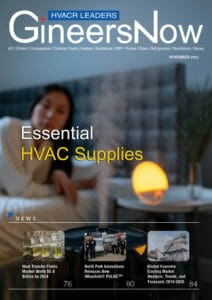
Click here to download the magazine
Click here to read on Yumpu


